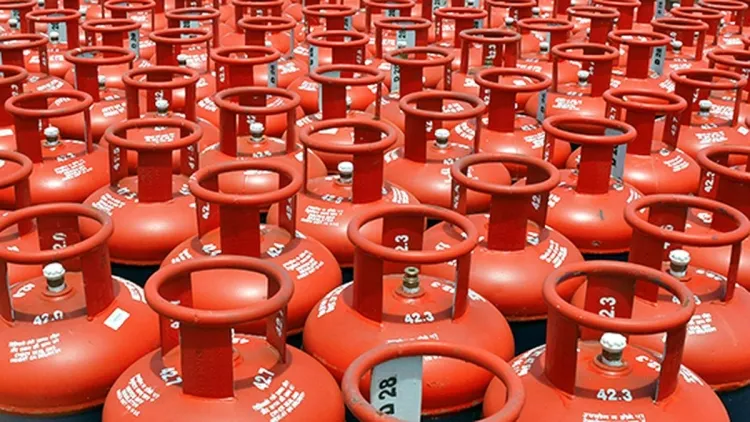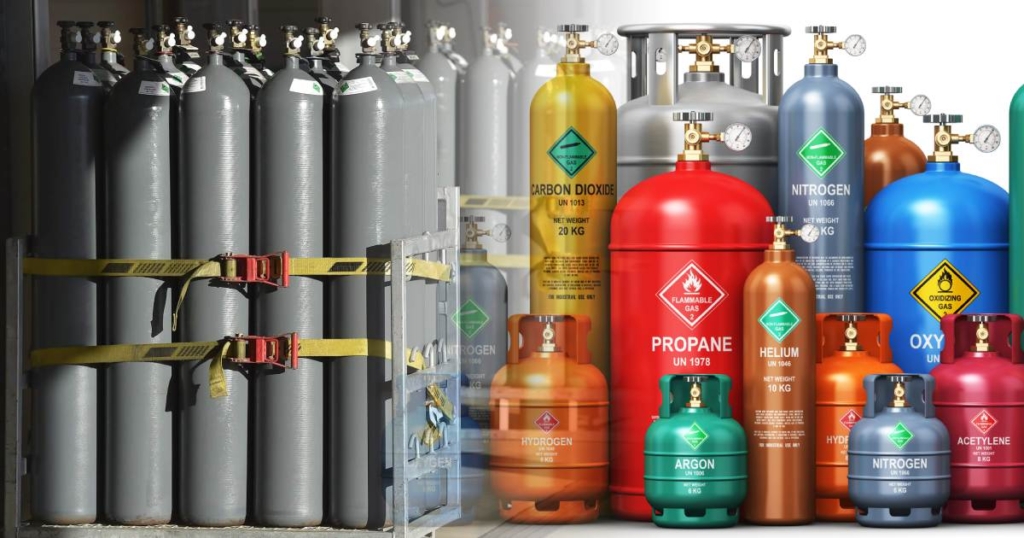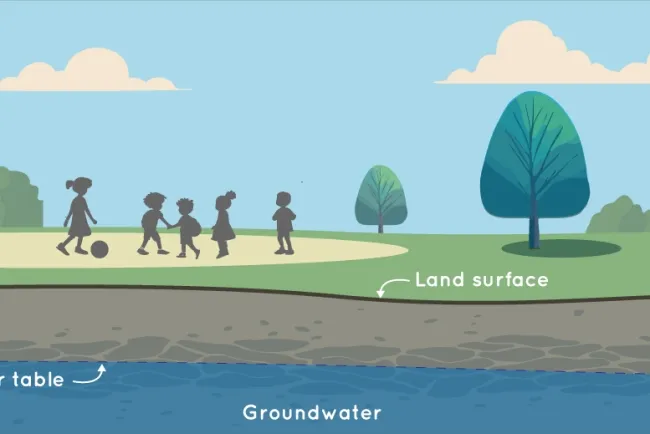Gas Cylinders: Essential Components in Modern Industry and Household Applications...!!!
Gas cylinders are crucial elements in both industrial and household settings, offering a convenient and efficient means to store and transport gases. These cylindrical containers are engineered to securely hold gases under high pressure, making them indispensable for activities ranging from cooking and heating to various industrial processes and medical applications.

Types of Gas Cylinders
Gas cylinders are available in different types, each tailored for specific gases and their respective uses. Some common types include:
-
LPG Cylinders: These are primarily used for cooking and heating. Liquefied Petroleum Gas (LPG) cylinders, popular in homes and commercial kitchens, contain a mix of propane and butane. They are portable and easily connectable to stoves or heaters.
-
Oxygen Cylinders: Utilized in medical environments to provide supplemental oxygen for patients with respiratory issues, these cylinders also find use in industrial applications like welding and cutting.
-
Acetylene Cylinders: Known for storing acetylene, a highly flammable gas, these cylinders are used in welding and cutting processes. They are often used alongside oxygen cylinders.
-
Nitrogen Cylinders: Employed in various industrial activities, including food packaging, chemical manufacturing, and electronics production, nitrogen cylinders are designed to maintain the gas's purity under high pressure.
-
Carbon Dioxide Cylinders: These have diverse applications, such as carbonating beverages, in fire suppression systems, and as refrigerants in cooling systems.
Safety Features
Safety is a paramount consideration in the design and usage of gas cylinders. Manufacturers integrate several safety features to ensure that gas cylinders are used and transported securely:
-
Valve Protection: Valves control the release of gas from the cylinder. Protective caps or guards are provided to safeguard valves from damage during transportation and handling.
-
Pressure Relief Devices: To avert accidents due to over-pressurization, gas cylinders are equipped with pressure relief devices. These devices release gas automatically if internal pressure exceeds safe levels.
-
Color Coding: Cylinders are color-coded based on the type of gas they contain. This coding helps users quickly identify the contents and implement appropriate safety measures.
-
Material and Construction: Typically made from high-strength materials like steel or aluminum, gas cylinders are constructed to endure high pressure and prevent leaks or ruptures.

Handling and Storage
Proper handling and storage of gas cylinders are vital for safety and to maintain the gases' integrity. Key guidelines for handling and storage include:
-
Storage: Cylinders should be kept in well-ventilated areas, away from heat sources and ignition points. They should remain upright and be secured to prevent them from toppling over.
-
Transportation: During transport, cylinders must be secured to prevent movement and shielded from physical damage. Vehicles used for transport should be well-ventilated.
-
Usage: Before using a gas cylinder, it is important to check for any signs of damage or leaks. The valve should be opened gradually, and appropriate regulators and fittings should be used to control gas flow.
Applications
Gas cylinders serve a wide array of applications across various industries:
-
Household: LPG cylinders are commonly used in homes for cooking and heating, providing a reliable and efficient energy source.
-
Medical: Oxygen cylinders are critical in medical settings for delivering respiratory support to patients and are also utilized in ambulances and emergencies.
-
Industrial: Gas cylinders play a pivotal role in industrial processes such as welding, cutting, and chemical manufacturing, using gases like acetylene, oxygen, and nitrogen.
-
Food and Beverage: Carbon dioxide cylinders are employed in the food and beverage industry for carbonating drinks and preserving packaged foods.
-
Fire Suppression: Cylinders containing fire suppression agents like carbon dioxide are integral to fire suppression systems, enabling quick extinguishing of fires.

Environmental Considerations
The use of gas cylinders has environmental implications. Manufacturers and users are increasingly adopting practices to minimize the environmental impact:
-
Recycling: Gas cylinders can be recycled at the end of their useful life, reducing the demand for raw materials and minimizing waste.
-
Refilling: Many gas cylinders are designed to be refilled and reused multiple times, conserving resources and reducing the need for new cylinders.
-
Green Alternatives: Research is ongoing to find greener alternatives to traditional gases. For example, hydrogen is being explored as a cleaner substitute for acetylene in welding and cutting.
Gas cylinders are indispensable tools that play a crucial role in our daily lives and various industries. Their thoughtful design, safety features, and proper handling ensure that gases can be stored and utilized efficiently and safely. As technology progresses and environmental awareness grows, the gas cylinder industry continues to evolve, adopting sustainable practices and exploring new alternatives to meet future needs.
What's Your Reaction?

















